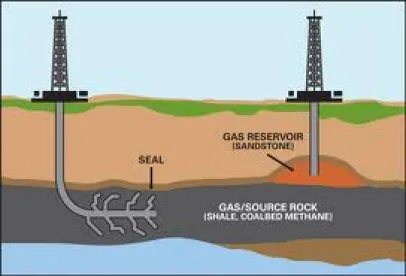The Bureau of Land Management (“BLM”) issued a final rule on March 20, 2015 to regulate hydraulic fracturing or “fracking” on public and American Indian Lands. Although the new rule has been final for less than three weeks, it is already a source of controversy.
In a press release, the BLM explained that the new rules “will support safe and responsible hydraulic fracturing on public and American Indian lands” and “will improve safety and help protect groundwater by updating requirements for well-bore integrity, wastewater disposal and public disclosure of chemicals.” Secretary of the Interior, Sally Jewell explained that the new rules will replace out-of-date standards more than 30 years old that have “simply not kept pace with the technical complexities of today’s hydraulic fracturing operations.”
The BLM describes the key components of the rule, to take effect in 90 days, as follows:
-
Provisions for ensuring the protection of groundwater supplies by requiring a validation of well integrity and strong cement barriers between the wellbore and water zones through which the wellbore passes;
-
Increased transparency by requiring companies to publicly disclose chemicals used in hydraulic fracturing to the Bureau of Land Management through the website FracFocus, within 30 days of completing fracturing operations;
-
Higher standards for interim storage of recovered waste fluids from hydraulic fracturing to mitigate risks to air, water and wildlife;
-
Measures to lower the risk of cross-well contamination with chemicals and fluids used in the fracturing operation, by requiring companies to submit more detailed information on the geology, depth, and location of preexisting wells to afford the BLM an opportunity to better evaluate and manage unique site characteristics.
Although the BLM cited extensive public involvement in shaping the new rule, public reaction has been largely negative. Two industry groups, Independent Petroleum Association of America and Western Energy Alliance, filed a petition for review of final agency action in the United States District Court for the District of Wyoming, the same day the final rule was issued. The petition argues that the regulatory conditions imposed by the rule “constitute arbitrary and unnecessary burdens that either duplicate state law requirements or improperly curtail the primary jurisdiction of state governments.” Similarly, on March 26, 2015, the State of Wyoming filed suit seeking review of the BLM rule. The state argues that that the exclusive authority to regulate underground injections is committed to the states and to the EPA under the Safe Drinking Water Act. Thus, the state alleges, the BLM has exceeded its jurisdiction. And, this week, the State of North Dakota moved to intervene and join Wyoming’s challenge of the rule.
The new fracking rule has also received a lukewarm reception by environmental groups. In astatement, Lauren Pagel, the Policy Director of Earthworks, acknowledged that the rule is an improvement over the status quo, but in many ways “falls short of what is needed to protect the environment and continues the Obama administration’s pattern of prioritizing fossil fuel extraction over clean energy development and people’s health.” The group Americans Against Fracking called the rule “toothless” and called for bolder action in the future.
While the new rule represents a sea-change from the fracking standards of the last 30 years, it remains to be seen whether it will survive the various challenges by industry groups and oil-friendly states.



 />i
/>i

